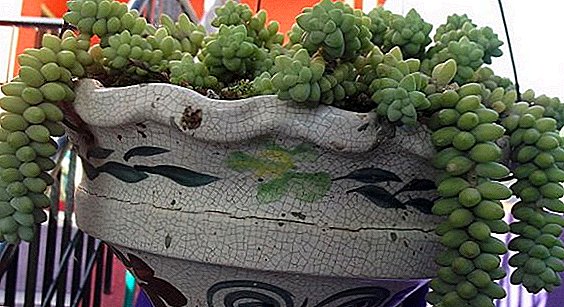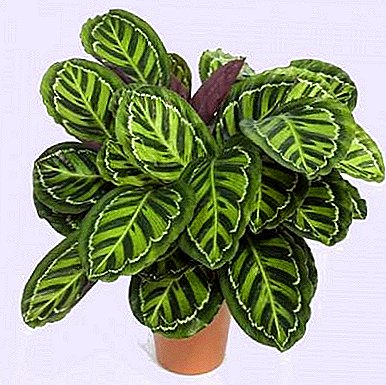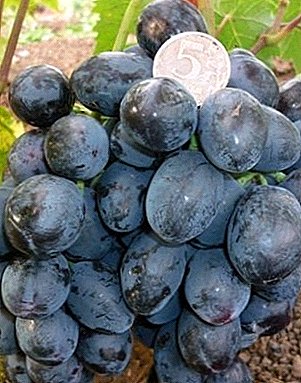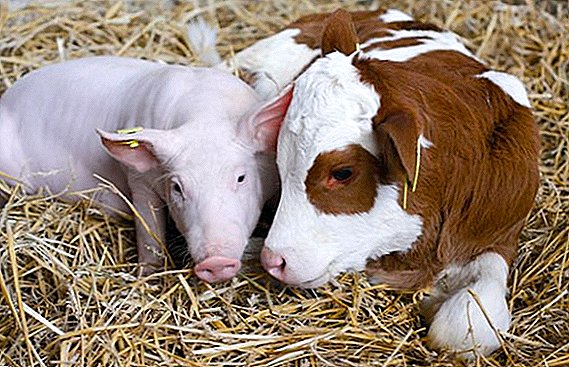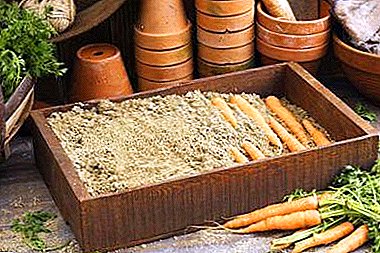
Carrots contain a large amount of vitamins and trace elements that are beneficial to the human body. It is an excellent way to maintain good health in both adults and children.
In order to benefit from carrots, not only in summer, but also in winter, you need to know the conditions under which it can be laid and stored. For proper storage, you must comply with a certain temperature, humidity and ventilation mode.
In our article we will consider in detail how to store carrots. You can also watch a useful video on this topic.
Peculiarities of vegetable structure
Preparation begin in the spring, before landing. For sowing, seeds of varieties that can withstand long shelf life are preferred.. These varieties are specially derived and have a property called keeping quality.
On packages with seeds this factor is indicated. In addition to it, the quality and preservation of carrots in the winter period are influenced by several significant factors:
- weather conditions in summer;
- suitability of a variety for a specific region;
- harvest time;
- ripeness level;
- Mandatory compliance with storage conditions.
Varieties that can be saved for a long time
 Late-ripening carrots are most suitable for winter storage.whose ripening period is from 110 to 130 days, or mid-ripening, ripening from 105 to 120 days. Some varieties are distinguished by better storage in the winter, compared to the others. They have good cold resistance, they are less susceptible to diseases and have excellent keeping quality. During storage, they retain their taste and healthy qualities.
Late-ripening carrots are most suitable for winter storage.whose ripening period is from 110 to 130 days, or mid-ripening, ripening from 105 to 120 days. Some varieties are distinguished by better storage in the winter, compared to the others. They have good cold resistance, they are less susceptible to diseases and have excellent keeping quality. During storage, they retain their taste and healthy qualities.
The best known for long-term storage are the following varieties:
- Shantane
- Moscow winter.
- Nantes.
- Queen of autumn.
- Karlen.
- Vita Long
- Flaccore.
If the variety is unknown, or the seed bag has not been saved, it is necessary to pay attention to the shape of the carrot. In early-ripening carrots, the form is mainly short and round. (Parisian carrot) and they have poor keeping quality.
Ways to save carrots
There are storage methods that are proven by time and practice.. Keeping carrots helps:
- sand;
- sawdust of coniferous trees;
- onion and garlic husks;
- bags;
- clay shell.
The importance of proper bookmarking carrots for the winter
Proper storage and preparation of storage facilities for carrots are important conditions for a long shelf life, without loss. How to prepare the room:
- Preparation begin one month before the bookmark. Initially, the room is ventilated and disinfected. The disinfection procedure is carried out using sulfur bomb or bleach.
- In two weeks the walls are whitened. Copper lime must be added to the solution with slaked lime. It is recommended to spend 0.5 liters of solution per 1 m during whitewashing.2.
To avoid rotting and drying of root vegetables, special storage conditions must be observed.. These include:
- temperature regime not lower than -1ºС and not higher than + 2ºС;
- relative humidity from 90 to 95%;
- moderate ventilation.
Important: Even a slight change in temperature can cause drying, rotting or sprouting of root crops. At + 5ºС carrots begin to germinate.
How to lay a vegetable in the cellar, basement or garage pit?
Consider how to lay carrots for long-term storage in the winter in the cellar, basement or a special garage pit.
In the sand
It is the most popular among gardeners and the simplest. The sand is able to maintain a stable temperature.Because of this, carrots do not dry out and harmful bacteria cannot develop. When laying for winter storage, you need to follow the sequence:
 Root vegetables are stored in wooden or plastic boxes in clay sand. In the sand you need to add a little water, then spray the sand with a spray gun.
Root vegetables are stored in wooden or plastic boxes in clay sand. In the sand you need to add a little water, then spray the sand with a spray gun.- The bottom of the tank should cover a layer of sand from 3 to 5 cm.
- Root crops are laid in rows on the sand at a distance of 2 to 3 centimeters from each other. Cover carrots with sand so that the sand completely covers the roots, and spread out the next row of roots.
- Continue alternating layers until the container is completely filled.
We recommend to watch the video about the storage of carrots in the sand:
Softwood sawdust
Pine or spruce sawdust will be suitable for storage. The content in the sawdust of phenolic substances prevents the development of putrefactive bacteria, and also does not allow carrots to germinate.
 As a storage container, give preference to a wooden box (volume up to 18 kg) with a tight-fitting lid.
As a storage container, give preference to a wooden box (volume up to 18 kg) with a tight-fitting lid.- The bottom of the box is filled with coniferous sawdust in a layer of two to three centimeters.
- On sawdust to lay the roots. Carrots should not be in contact with each other.
- Lay the first layer of carrots covered with a layer of sawdust, completely covering the roots.
- Alternate layers of carrot and sawdust until the box is completely full. After you remove the container with root vegetables for storage in the cellar, basement or in the pit garage.
We recommend to watch a video about the storage of carrots in coniferous sawdust:
In bags
 In bags of polyethylene with a volume of 5 to 30 kg fill carrots, filling the container with root crops by 2/3.
In bags of polyethylene with a volume of 5 to 30 kg fill carrots, filling the container with root crops by 2/3.- Put the bag in the cellar in a vertical position on a shelf or on a stand. The bag must be open because carrots emit carbon dioxide. A large CO concentration will accumulate in the closed bag.2That will lead to rotting carrots.
- Condensation inside the bag indicates an increased level of humidity. To avoid the accumulation of condensate on the bottom, the bag at the bottom must be notched and near the lime we put a fluff that can absorb excess moisture.
In onion peel
 In the onion peel the shelf life of root crops is the same as in sawdust. The content in the husk of essential substances does not allow bacteria to develop and the process of rotting.
In the onion peel the shelf life of root crops is the same as in sawdust. The content in the husk of essential substances does not allow bacteria to develop and the process of rotting.
- Cover the bottom of the canvas bag with a significant layer of onion peel.
- On top of the husk lay roots.
- Cover carrots with a thick layer of husk. Alternate the layers until the bag is full, ending with a layer of onion peel.
- Bags are put on the shelves or hung on a nail in the cellar.
This method will save carrots until the next harvest.
In clay
Carrots can be stored in dried clay. A thin clay shell will protect the roots from possible spoilage until the next year’s harvest.
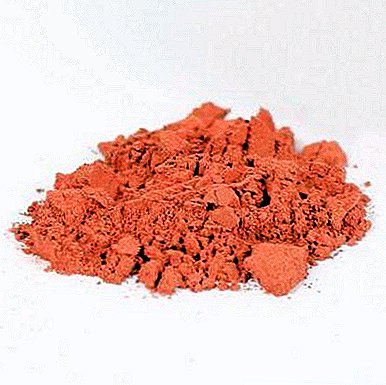 Half a bucket of clay diluted with water.
Half a bucket of clay diluted with water.- After the clay swells, add more water and mix thoroughly. The consistency should not be thicker than sour cream.
- Cover the bottom of the box or basket film.
- On it in rows lay out the roots, avoiding contact with each other.
- The first layer of carrots pour clay. After the clay dries, lay out the second layer and pour over the clay;
- Lay carrots to fill the container.
Additional tips and warnings
Carrot storage time:
- in the refrigerator up to two months;
- in bags of polyethylene up to four months;
- in the sand up to eight months;
- in clay, sawdust of coniferous trees, onion peel one year.
When carrots and apples are stored together, carrots deteriorate quickly. Ripe apples stand for ethylene, which makes the roots unsuitable for consumption.
Board: Regular shuffling of the crop, removal of spoiled root crops and cutting of the growing foliage helps prolong the shelf life and avoid possible crop losses.
Conclusion
Proper implementation of all activities for the preparation and storage of carrots, will allow all year to enjoy its juicy fruits. From the proposed storage methods, you can choose the most suitable. In the spring, sow only seeds with a long shelf life.


 Root vegetables are stored in wooden or plastic boxes in clay sand. In the sand you need to add a little water, then spray the sand with a spray gun.
Root vegetables are stored in wooden or plastic boxes in clay sand. In the sand you need to add a little water, then spray the sand with a spray gun. As a storage container, give preference to a wooden box (volume up to 18 kg) with a tight-fitting lid.
As a storage container, give preference to a wooden box (volume up to 18 kg) with a tight-fitting lid. In bags of polyethylene with a volume of 5 to 30 kg fill carrots, filling the container with root crops by 2/3.
In bags of polyethylene with a volume of 5 to 30 kg fill carrots, filling the container with root crops by 2/3. Half a bucket of clay diluted with water.
Half a bucket of clay diluted with water.


